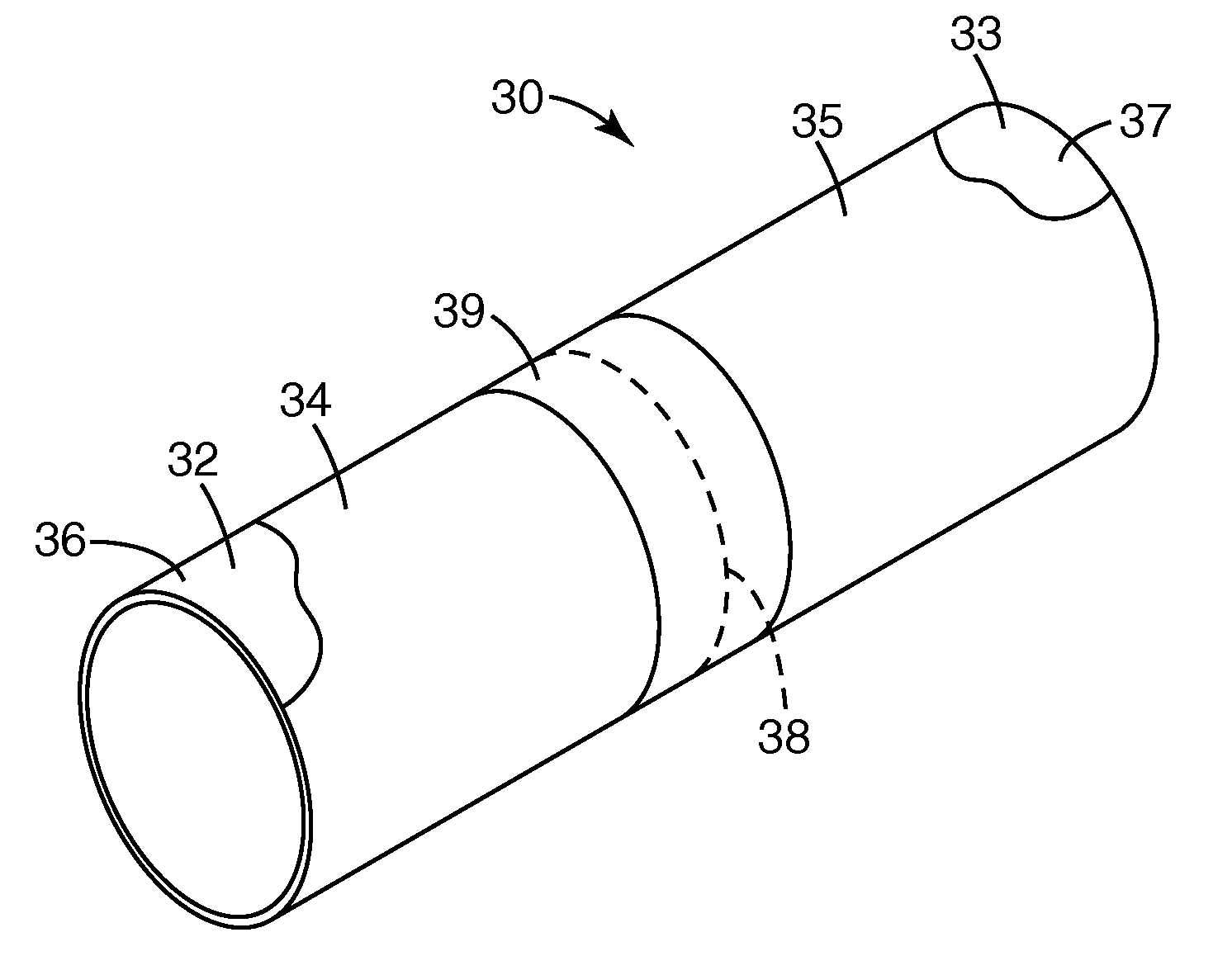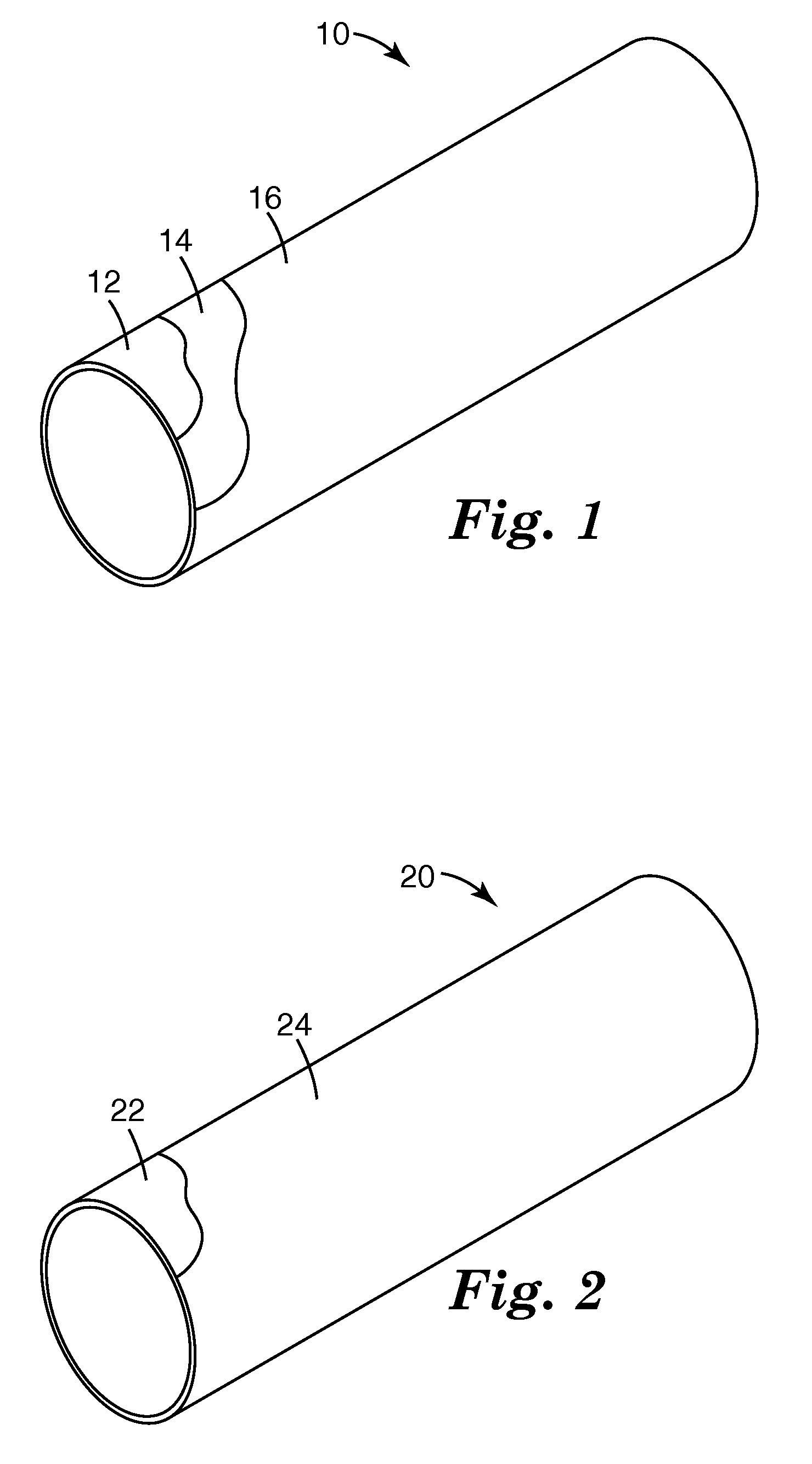Interpenetrating polymer network as coating for metal substrate and method therefor
a technology of interpenetrating polymer network and metal substrate, which is applied in the field of metal substrate, can solve the problems that the interior of the vessel, the pipe or the tube can be subjected to a harsh environment, and achieve the effects of excellent protective layer, superior impact resistance and superior cohesion
- Summary
- Abstract
- Description
- Claims
- Application Information
AI Technical Summary
Benefits of technology
Problems solved by technology
Method used
Image
Examples
examples
[0112] All weight percents of materials are based on the weight of the total composition.
[0113] As used herein:
[0114]“CD” refers to cathodic disbandment;
[0115]“FBE” refers to fusion bonded epoxy;
[0116]“G3003” refers to EPOLENE G-3003, a maleated polyolefin available from Eastman Chemical Co., Kingsport, Tenn.;
[0117]“MOPLEN” refers to MOPLEN COAT EP / 60 BIANCO, a polyolefin available from Basell North America, Inc., Elkton, Md.;
[0118]“EPON 828” refers to EPON 828, an epoxy resin obtained from Resolution Performance Products, Houston, Tex.
examples 1-4
Cathodic Disbondment of IPN Compositions Applied to FBE
[0119] A composition of 95 weight percent of a mixture of 95 parts by weight of MOPLEN and 5 parts by weight G3003, and 5 weight percent EPON 828, all based on the weight of the total resin composition, was compounded using a Haake 18 millimeter twin screw extruder at 200 rpm. The temperature profile in the extruder ranged from approximately 200° C. to approximately 220° C. The rolls in the casting station were set to 20° C. The thickness of the extruded film was 0.635 millimeters (0.025 inches). The film composition was applied to each of four 4 inch by 4 inch by 0.25 inch steel panels that were first cleaned by sandblasting / tumbling with G40 grit particles and were then coated with a 0.152 mm (0.006 inch) thick layer of SCOTCHKOTE 226N11G fusion bonded epoxy (available from 3M Company, St. Paul, Minn.) that was applied according to the directions provided by the manufacturer. That is, the extruded film was applied to the sur...
examples 5-7
[0120] Low Temperature Bend Tests of IPN-Coated Steel Pipe A laboratory pipe coater was used to wrap 3-inch diameter steel pipes, previously cleaned by sandblasting, with IPN compositions. The pipes were first coated with a 0.152 mm (0.006 inch) layer SCOTCHKOTE 226N 11 G fusion bonded epoxy (available from 3M Company, St. Paul, Minn., and applied according to the directions provided by the manufacturer) and then with the same polymer composition used in Examples 1-4. The polymer compositions were extruded at a temperature of approximately 195° C. and were applied to the pipes, which had been heated to 204° C. and 232° C. Sections of each of the five coated pipes were cut into sections having dimensions of 25.4 mm by 177.8 mm (1 inch by 7 inches). These sections of pipe were tested at a temperature of −30° C. according to Canadian Standard CSAZ245.20, except that the angle of bending was 7.25°. The thickness of each pipe coating is given in Table 2. No cracks or other marks were obs...
PUM
| Property | Measurement | Unit |
|---|---|---|
| weight percent | aaaaa | aaaaa |
| weight percent | aaaaa | aaaaa |
| weight percent | aaaaa | aaaaa |
Abstract
Description
Claims
Application Information
 Login to View More
Login to View More - R&D
- Intellectual Property
- Life Sciences
- Materials
- Tech Scout
- Unparalleled Data Quality
- Higher Quality Content
- 60% Fewer Hallucinations
Browse by: Latest US Patents, China's latest patents, Technical Efficacy Thesaurus, Application Domain, Technology Topic, Popular Technical Reports.
© 2025 PatSnap. All rights reserved.Legal|Privacy policy|Modern Slavery Act Transparency Statement|Sitemap|About US| Contact US: help@patsnap.com



